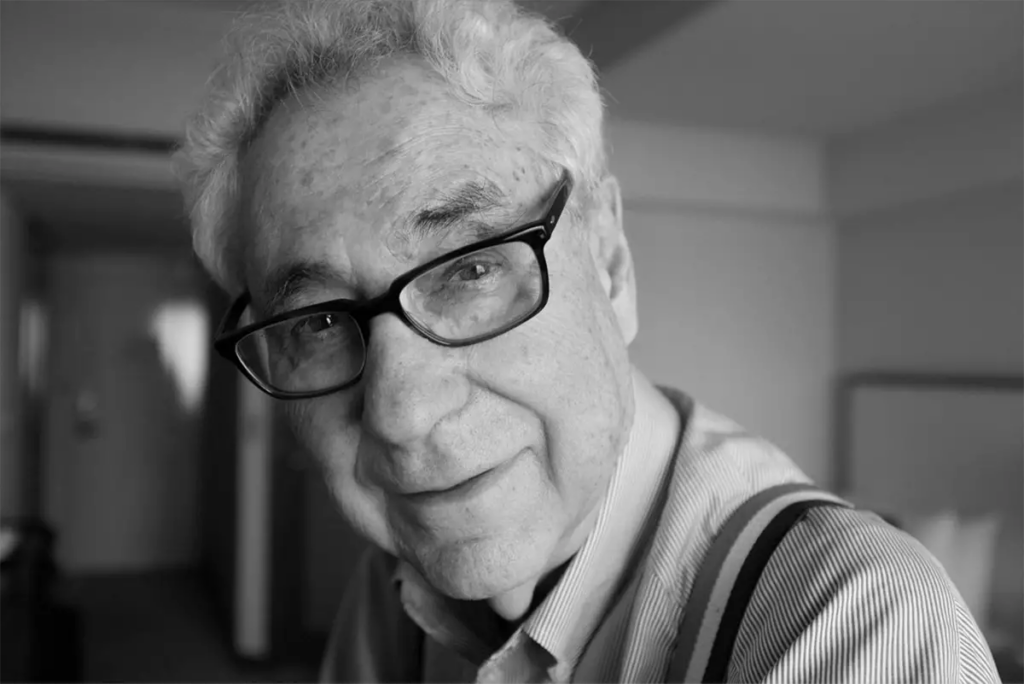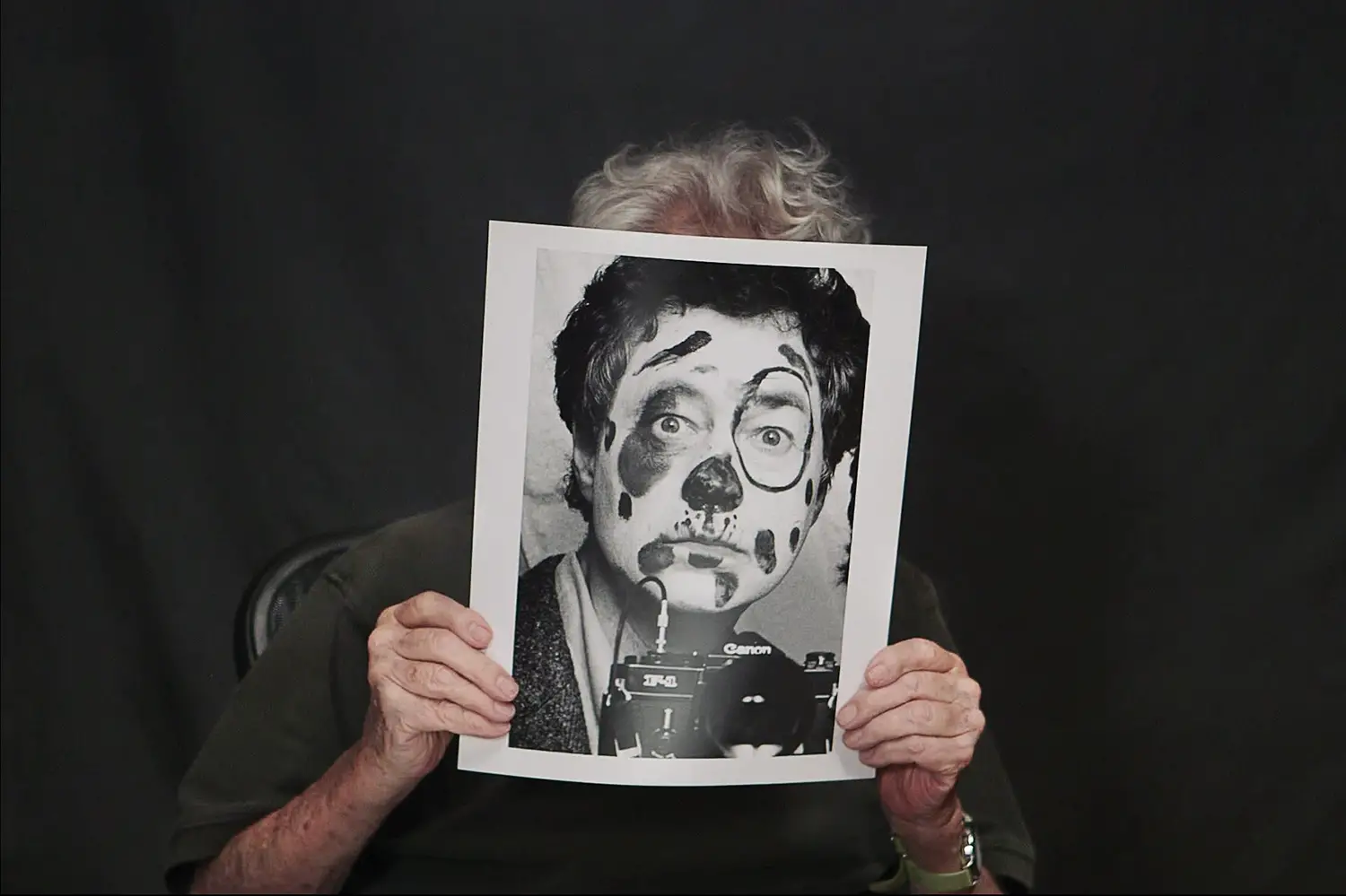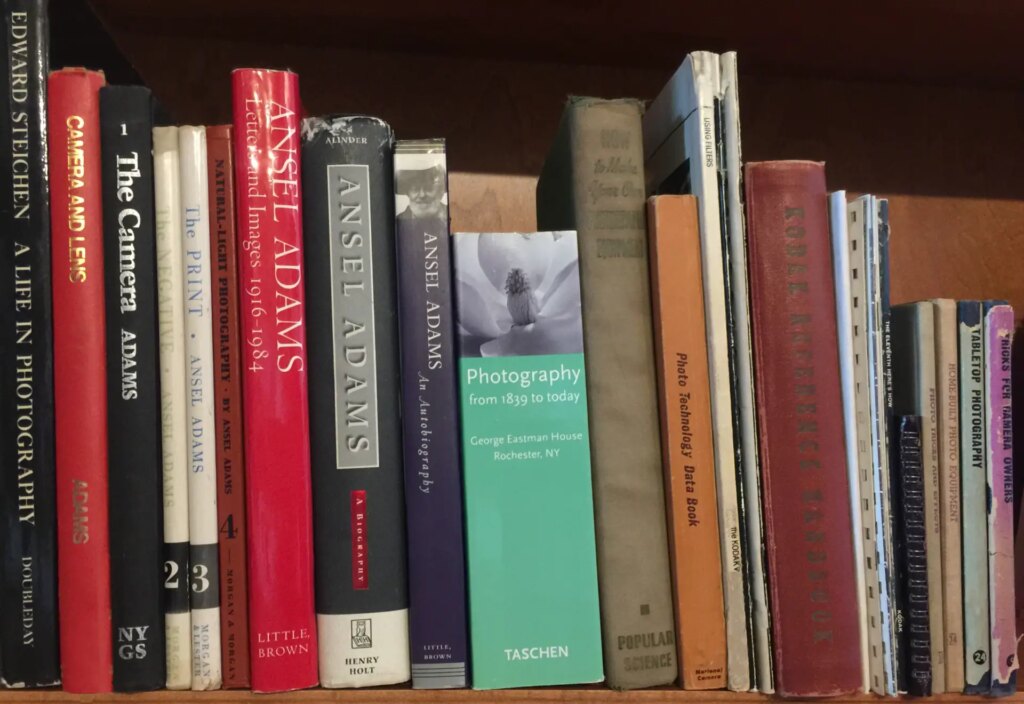“Can I ask you a question?” So opens Adriana López Sanfeliu‘s reflective, affectionate portrait of her friend and mentor Elliott Erwitt. A question of a question. A fitting, subtle nod to the photographer’s ironic humour, and famed reticence for “museum talk” or philosophising his photography. The subsequent question, and answer, begins an intimate, often contemplative, hour-long journey into the life of the, at the time of writing, 94-year-old Magnum Photos member – and former president – who continues to work, preferring to let his photography speak. “C’est la photo qui doit faire du bruit.”
A film about a photographer “serious about not being serious”, López Sanfeliu’s documentary shows us Erwitt’s most endearing quirks. Whether he is barking at dogs for their attention, making a series of increasingly absurd self-portraits, or using a selection of comedy clown horns to tease portrait subjects into laughing it is impossible not to warm to the man and his abundant, playful, enjoyment of life.
Though most known for his wry, witty, and often ironic candid photographs of 20th-century life, Elliott Erwitt is a thoughtful, humanist photographer capable of the most profound social statement. One need only think of his photographs of the dog-walker on a New York stoop, and of the water fountains in 1950s segregationist North Carolina to experience the wide gamut of his work. Despite his advancing years, he continues to work with a charming, curiosity sparkling in his eyes. Among other destinations, the film takes us on his return journeys to Cuba 50 years after he last travelled there to photograph Fidel Castro and Che Guevara in 1964.
After an invitation to travel there for a project, Erwitt first returned to Havana following the “Cuban Thaw” in 2014, joined by López Sanfeliu and his long-time book publisher and friend, Stuart Smith. Though successful, the trip is portrayed as a reality check for the octogenarian, pushing himself past his limits. Nevertheless, he later returns again to the country, driven by the desire to bring his photographs of the 1960s together with his more recent work in a book. Thematically, the film explores the desire to continue to work and create despite limitations brought about by age. This is shown no more gracefully than in Erwitt’s meeting with Alicia Alonso, the famed Cuban ballerina, now in her 90s, totally blind, and yet still running a classical ballet school in Havana. Erwitt is in awe of her tenacity and talent, the film allows us to be in awe of his. From Cuba, the work he makes is as captivating as anything that has gone before.

Silence Sounds Good eschews standard biographical fare. Though we are told of key moments of his life, by not approaching Elliott Erwitt’s biography in strict linear chronology, the film instead opts to preserve a particular moment in the twilight of the photographer’s creative endeavours. Erwitt’s conversations with the director, scattered throughout, are as striking as they are charming. Answers are preceded or followed by long pauses of contemplation, frequently followed with a characteristic bon mot. The silence gesturing toward his enigmatic side but never so much that the man or his undeniable love of photography feels ever out of reach.
“There’s nothing more definite than ending a career by dying.” For Elliott Erwitt, one hopes that day is far ahead of us.
Thanks for reading. I hope you enjoy the film. Images illustrating this article are © Adriana López Sanfeliu
You can find me at my website, or on twitter.
Share this post:









Comments
Eric on “Elliott Erwitt: Silence Sounds Good” review – By Neil Milton
Comment posted: 23/08/2022
Dan Castelli on “Elliott Erwitt: Silence Sounds Good” review – By Neil Milton
Comment posted: 26/08/2022